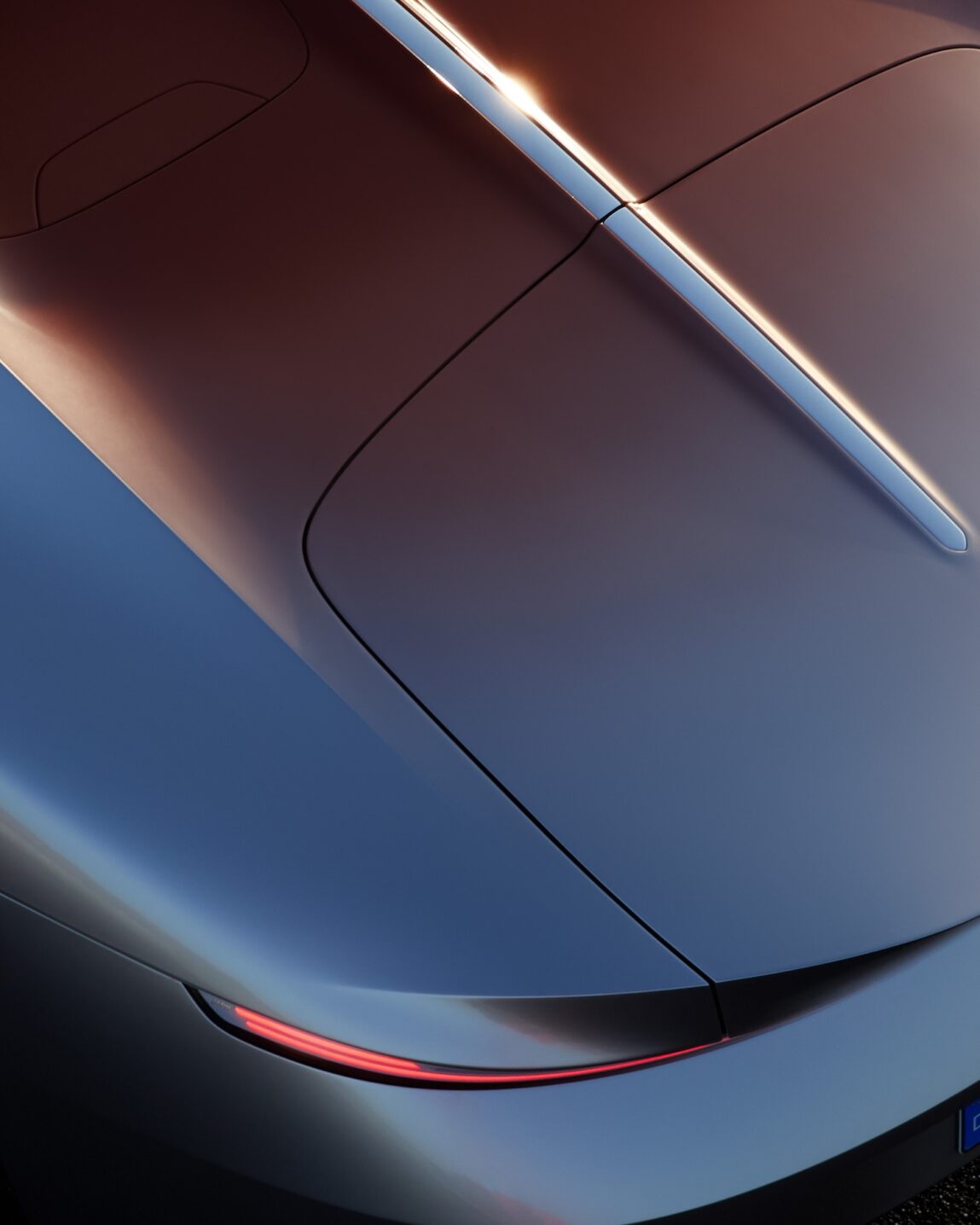Text Sarah WETZLMAYR
The chief designers of BMW, Mercedes, Porsche and Audi agree that strong brands can afford to make big leaps. With new design concepts, a great deal of courage and a clear commitment to reduction and clarity, they want to successfully defend the pioneering role of German automotive design in the future. And they intend to do so offensively rather than defensively. We spoke to Adrian van Hooydonk, Gorden Wagener, Michael Mauer and Massimo Frascella about the future of German automotive design.
When does evolution become a revolution? And how do you succeed in jumping far, but only taking off literally and not metaphorically? Or: How do you stay closely connected to the community that has formed around a brand, but at the same time create a new, unusual tension in the strong bond between product and fan community? Adrian van Hooydonk, Massimo Frascella, Michael Mauer and Gorden Wagener have different answers to these questions. However, there are also a number of common threads—including the knowledge that big leaps in automotive design are perhaps more important than ever before. But also that they must not lose sight of their respective brand histories in the process. And: they are all convinced that German automotive design is still successfully defending its pioneering role.
As in soccer, however, a more offensive style of play is often the more effective strategy for staying in the lead in automotive design. Massimo Frascella, Chief Creative Officer at Audi since the beginning of June this year and an avowed Juventus fan, puts it this way in our interview: »There are many things that link soccer and automotive design. First of all, both areas are about teamwork—you can’t be sure of success in either design or soccer if you only send eleven superstars onto the pitch. But if you have eleven people with the same goal and the same vision, you are more likely to win. I also believe that it is necessary to take risks and differentiate yourself from the others with a clear message. Playing the game the way everyone else plays it? That wouldn’t be Audi.«
Among other things, the following can be deduced from this: The leap, which has already been mentioned here several times, can be a long and risky one, but it should never lead to you ending up in the so-called »Sea of Sameness«—and drowning in it. Gorden Wagener, Chief Design Officer of Mercedes-Benz Group AG since 2016, is certain that this can only happen to brands that do not have a strong brand identity. When it comes to not losing the aforementioned pioneering role, this plays a key role.
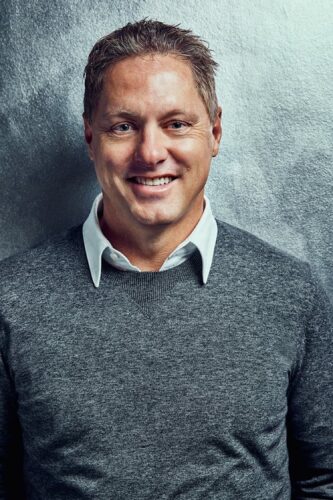
Gorden Wagener has been leading the global design division of Mercedes-Benz and its affiliated brands Mercedes-Maybach and Mercedes-AMG since 2008. For him, beauty is an intuitive feeling—an ideal one strives to approach, he explains in an interview with Chapter.
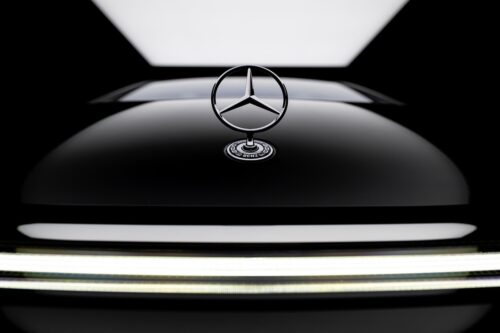
The Mercedes-Benz design philosophy of »Sensual Purity« fuses emotion and intelligence and is continuously developed further by Gorden Wagener’s design team—without, however, going beyond its defined scope. (In the picture: Mercedes-Benz EQS 580 4MATIC)
Porsche Head of Design Michael Mauer shares this view. He states: »One issue that distinguishes German automotive design from new competitors is the brands that have grown over the years. Porsche in particular has built up a very strong, unique and internationally established brand identity with its design over more than 75 years. We have perfected the balance between ›typical Porsche‹ and innovative, new design elements over a very long period of time. However, the new designs, which mainly come from Asia, are getting better and better. What years ago was still reminiscent of modified designs from German manufacturers is increasingly establishing itself as independent solutions. I find it exciting to observe the development of these brands.« Mauer is convinced that without a strong brand identity, there can be no identification with the brand—and this is what is needed to remain desirable in the long term.
Born in Rotenburg an der Fulda, Michael Mauer has been shaping the design of Porsche sports cars for 20 years. When he started in 2004 in Stuttgart-Zuffenhausen, Porsche only had three model series—the 911, the Boxter and the Cayenne. If you ask him about the last big leap at Porsche, he answers: »That was clearly the introduction of the first all-electric Porsche sports car. Long before we got to grips with the actual product design, we looked at the purely strategic question of how we wanted to position the car from a design perspective. At the heart of this consideration was the decision as to how far we wanted to visually differentiate the new drive type from the classic combustion engine. We made a conscious decision to give the Taycan a clear Porsche identity. From our point of view, it was important to clearly emphasize the affiliation to the Porsche brand visually. In concrete terms, this begins long before the pure styling process with the packaging: The arrangement of the components was crucial for the proportions and therefore a very significant issue at the beginning of the development cycle.«
For a traditional sports car brand in the luxury segment in particular, switching to a different type of drive is a big gamble. But if Michael Mauer has his way: »Nothing is sacrosanct. I’ve been in this profession for almost 40 years and from this experience I would say that you can definitely go further today than you could 20 years ago. And even must. But the things you rethink and change must also be done well. Just doing it differently is not enough.«
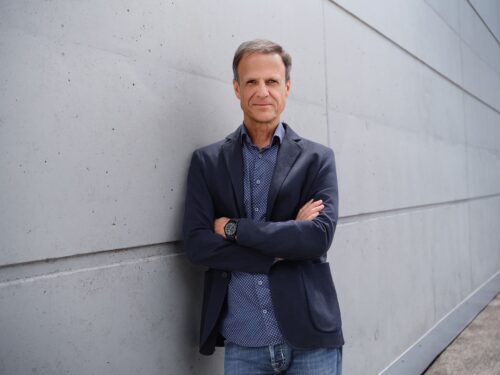
For 20 years, Michael Mauer, born in Rotenburg an der Fulda, has shaped the design of Porsche sports cars. For him, continuity and consistency are two of the most important aspects of a strong brand identity.
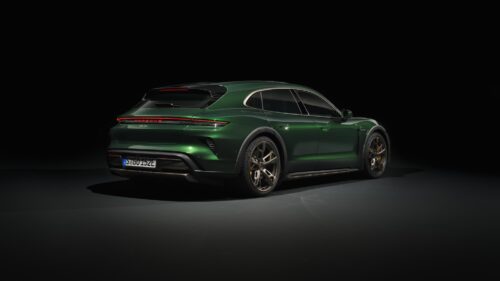
When designing the first all-electric Porsche, the Taycan, it was also important to Michael Mauer to ensure a clear Porsche identity despite the new type of drive. (In the picture: Taycan Turbo Cross Turismo, 2024)
Adrian van Hooydonk, Head of BMW Group Design, is convinced that major advances in technology require equally major advances in design. The Bavarian manufacturer is responding to this with a development that is definitely on the borderline between evolution and revolution: From end of 2025, the first Neue Klasse models will come onto the market—a new, greatly enhanced design approach that will gradually permeate the entire model range. In addition, the design team has been partially reorganized—Maximilian Missoni, a new but very experienced designer, has joined the management team.
»The Neue Klasse is so modern that it’s almost as if we’ve skipped an entire model generation. At the same time, of course, we are doing it in such a way that our customers also want to take this step. We don’t want to lose anyone along the way«, says Hooydonk. Reduction is the top priority. While at the same time exposing the core of the BMW brand. The Dutch-born designer explains what constitutes this in the following way: »For the BMW brand, it has always been sporty elegance. Dynamism paired with light-footedness. If you look at the designs from the 1970s, this was already the case at that time. In our new edition, we want to do this with even fewer elements—even more unobtrusively. Nevertheless, the essence of BMW will be even more clearly perceptible in these few elements. We are convinced that this will fit extremely well into the next decade.«
In addition, the focus will continue to be on combining design and technology as seamlessly as possible. This means: »If something looks fast, it is fast. We want to harmonize the driving experience with the design and vice versa. This requires an early exchange between technology and design. I believe that this will set us apart from many new competitors in the long term.«
After all, says Hooydonk, although cars are highly complex, technological products, the technologies between the brands are not all that different. »In the end, it’s all about the mixture of ingredients. Like a chef who manages to cook a different tasting dish with the same ingredients.«
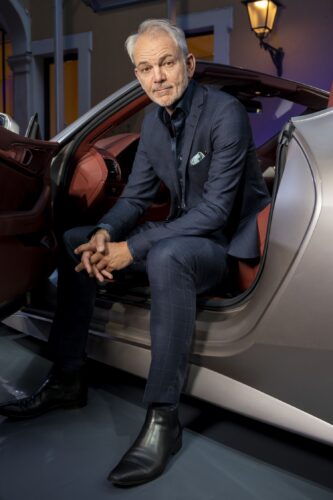
For Adrian van Hooydonk, Head of BMW Group Design since 2009, good proportions are the cornerstone of successful car design. »Then comes the surface. Then come the lines and only then the details.«
Since June 2024, Italian-born Massimo Frascella has been responsible for the perfect blend of all design ingredients at Audi. He began his career at Stile Bertone, and other stations in his design career included the Ford Motor Company and Kia. From 2011 to 2024, Frascella held senior positions at Jaguar Land Rover. As Chief Creative Officer at Audi, he wants to promote creativity even more as part of the brand core. This is also reflected in the German car manufacturer’s organization, as the design department has recently been anchored directly under the Chairman of the Board of Management. »In my opinion, creativity is something that should permeate the entire company—not just the design department. For me, this also includes the courage it takes to take risks. But also the belief in the things you initiate. And in your own intuition«, Massimo Frascella states.
At the time of the interview, the designer is not yet allowed to show concrete images of the directions in which he would like to steer the company’s creative potential in the future. But he can already reveal some of the ingredients, he says with a laugh and begins to explain: »We have established four key principles, which are: Clarity, Technology, Emotion and Intelligence. These elements must be present in every development step we take in design. When we talk about clarity and reduction, this means, among other things, that all the design elements we create must have a raison d’être and should also fit authentically into the brand image. When it comes to technology, we naturally refer to our brand credo »Vorsprung durch Technik« (English: Advantage through Technology)—it’s all about precision, progress and sophistication. Emotion means desirability—in the sense of: You don’t have to own an Audi, you absolutely want to own one. For me, this also goes hand in hand with a certain degree of self-confidence and an elegance that should by no means look contrived. The last point—intelligence—refers to major transformations in the industry. This includes how the consumer interacts with the product, but also all aspects relating to the imperative of sustainability.«
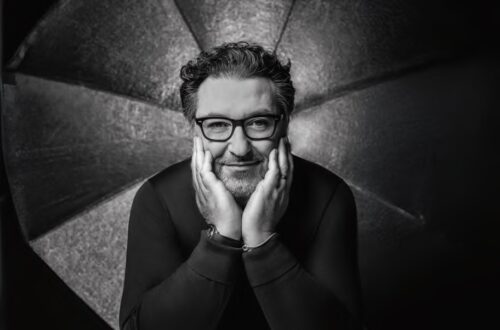
Since June 2024, Massimo Frascella has been Chief Creative Officer of Audi AG. His Design philosophy is based on simplicity, elegance and clarity—values that he wants to incorporate into all aspects of the brand.
At Mercedes, Gorden Wagener and his team have it in their hands to continuously develop the established design philosophy of »Sensual Purity«, which fuses emotion and intelligence, into the future—without going beyond its scope. However, this does not stop the Mercedes design team from constantly putting this framework to the test. »That’s why we have ›Advanced Design‹, our global design network. I would like the designers who work there to continuously review ›Sensual Purity‹ and explore the entire spectrum of the philosophy. Although the basic idea remains the same, we have to reinvent ourselves a little every day and challenge ourselves.« The French fashion brand Chanel is a good example of how a brand has constantly evolved without major disruptions, Wagener adds in our interview: »Karl Lagerfeld understood what Coco Chanel once created, but was not afraid to challenge it. However, he never violated the brand’s DNA. Strong brands and styles allow you to play with them.« In addition, the head designer of Mercedes adds that the luxury sector anticipates many developments and the mainstream gradually copies them. »This means that luxury defines taste for an exclusive group and then goes mainstream. For this reason, luxury must always evolve.«
Approaches such as that of Massimo Frascella, who demonstrates how the entire organization can be inspired by the creativity of the design team, show that »design-driven« is more than just an empty buzzword in the automotive industry. This also goes hand in hand with the fact that automotive design is no longer just about developing production cars and show cars, but that it is also part of the design team’s job to help shape the entire brand identity. »Sometimes I wish I was back in the old days, because we were able to concentrate much more on our core competencies. On the other hand, I find it incredibly exciting that we designers are becoming more and more involved in shaping the overall brand image. This has also changed the significance of design as a whole. In management positions, you are suddenly part of the company’s overall direction«, is how Michael Mauer sums it up. After all, to be at the forefront, the combination of brand and product has to be right.
When it comes to what makes a good design—what might even turn it into an icon—there are some parallels to be found across all four brands. Among other things: Proportion is (almost) everything. Gorden Wagener puts it like this: »You have to build the house right. The right proportions make up 80 percent of the rent.« And Adrian van Hooydonk describes the hierarchy of the individual steps in the design process as follows: »If the proportion is bad, you won’t get a good design. Proportion is the cornerstone, then comes the surface. Then come the lines and only then the details. However, our customers see this in the reverse order: they see the details first and may not even be aware of the proportions.«
The second important thing they have in common is their unwavering commitment to reduction and clarity. What does that mean in concrete terms? »If you like it, take one line off. If you still like it, take another line off«, is how Gorden Wagener sums it up. At best, this results in longevity, timelessness and, at best, inclusion in the Olympus of design icons. Massimo Frascella also quickly reveals himself to be a designer who was probably not too keen on decorative lines at school. Clarity, precision and perfect proportions—these are the cornerstones of his design philosophy. The big challenge is therefore to create his own signature with as few clear lines as possible.
If you succeed, are you close to the perfect form? Massimo Frascella laughs and answers: »There is no such thing as perfection. Of course, as designers we still strive for it. For me personally, the first-generation Audi TT is the car that I would say is very close. I say that because I wouldn’t do anything differently with this car. No, even from today’s perspective, I wouldn’t change anything about it.« The first-generation TT is a car that is more rational than almost any other, but makes its impact on an incredibly emotional level, continues Frascella. »That is also an important part of what makes Audi what it is: a form of rationality that goes straight to the heart.«
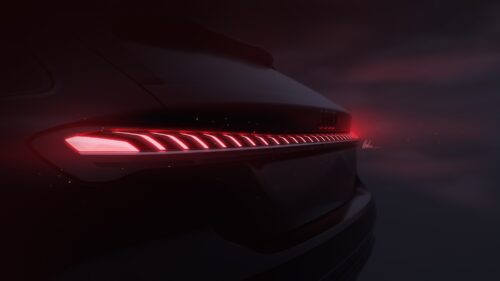
»In my opinion, creativity is something that should permeate the entire company—not just the design department«, emphasizes Massimo Frascella in an interview with Chapter. (In the picture: Design sketch of the Audi A5)
However, the fact that the perfect shape may not even exist does not detract from the perfectionism of Audi’s chief designer. »I am very proud of many of the cars I have worked on. But that doesn’t stop me from thinking about small adjustments or changes when I see them on the road.« His biggest critic is himself, says Frascella. »Maybe I’m even too hard on myself sometimes. On the other hand, that’s something I always encourage my team to do: be critical of your own ideas and don’t be satisfied with the first one you come up with. Check it out, maybe you’ll even come back to it in the end.«
Gorden Wagener also has a lot to say on the subject of perfection. »I am a friend of perfect aesthetics«, he says. For him, beauty is an intuitive feeling—an ideal that we try to approach. »Knowing that we will never achieve the perfection of creation. Nevertheless, we try. In addition to the visual definition, there is also the intellectual level that tells me: this is new and unexpected—the extraordinary. And it is precisely these two sides that constitute the Mercedes design philosophy of ›Sensual Purity‹.«
The design process itself also has these two sides—it is intuition and mental strength in equal measure. This means, among other things, that it is not enough to have good ideas, you also have to sell them successfully. »Design is a mental game, just like soccer. It’s a competition and we play in the Champions League, so to speak«, says Gorden Wagener, who wants to emphasize the close relationship between product and designer. »A car always embodies the philosophy of its designer, which in my case is ›Sensual Purity‹. And that’s why my current favorite car is always the one I’m currently working on.« To a certain extent, Michael Mauer also shares this statement: »Designers identify to a high degree with their work and the projects they are working on. Positive feedback boosts motivation all the more. However, not every design can win a strong competition—even in an internal comparison of different designs. That is why I am firmly convinced that dealing with supposed failure is also an important learning field for young designers.«
And what was that again about intuition? Massimo Frascella answers: »Of course, there is always a foundation based on data. But from this starting point, intuition and gut feeling come into play. Intuition is also what makes the difference in the end, in my opinion. Because if only the facts were important, everyone would come to the same conclusion.« Then the leap into the so-called »Sea of Sameness« wouldn’t be too far. Unlike soccer, where players run around the pitch in the here and now, trying to find the perfect balance between offense and defense, automotive designers live in the future—at least professionally. And are—in the best case—ahead of their time, but without losing touch with the present. »I always say that we live in a different time zone in design, because we are currently working on the cars that will be on the market at the end of the decade. With studies and show cars, we are going even further into the future. So if you ask customers today how they like the car you are currently working on, you will always get an answer from the present. If he or she doesn’t like it today, that’s often a better sign than immediate enthusiasm«, is how Gorden Wagener describes the unusual time zone in which he spends his professional life. Towards the end of the interview, we ask Massimo Frascella whether he sometimes feels anxious about helping to shape the future of mobility in such a decisive way. With his typical openness, he replies: »It’s important to find a balance, because it ensures that you don’t lose respect for the task and still remain creative and curious. In my opinion, these are the most important qualities when it comes to staying relevant and successful. With experience also comes self-confidence and the knowledge that we can anticipate the future well and thus create emotional, even iconic models.«
According to Gorden Wagener, passion also plays a central role: »For me, design is an aristocratic occupation. Every design task is a fulfillment and an opportunity for further development.« And sometimes all these aspects come together perfectly and, on top of that, »happy accidents happen«, as Michael Mauer likes to put it. During the conversation, a concrete example of this comes to mind: »Years ago, we were discussing the design of the rear end of a 911 together as a team on a clay model—I leaned against the model and accidentally broke off a part. The result: the disruptive feeling we had previously discussed was gone—problem solved.« Only a small fraction of the problems that affect the future of mobility will probably be solved in this way. It may well take a revolution or two. What this will look like is in the hands of the four people we spoke to for this article, among others.
FIRST PUBLISHED IN CHAPTER №XI »TASTEMAKERS« — WINTER 2024/25

